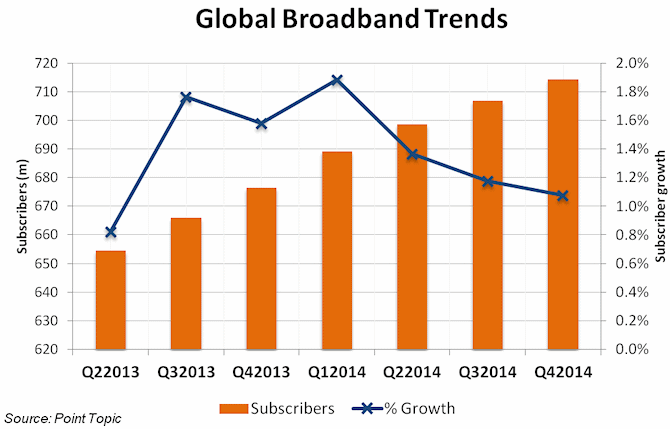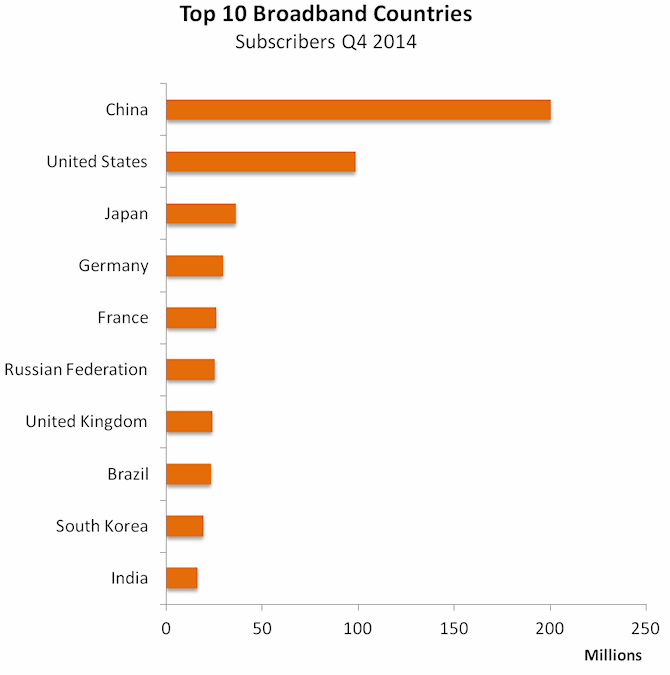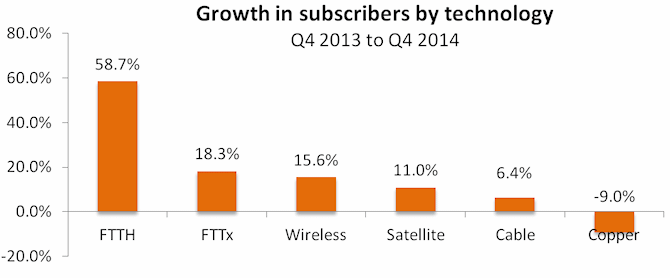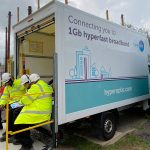Fibre Optic Surge Helps Global Fixed Broadband Subscribers Top 714 Million
The latest Point Topic statistics reveal that the total number of world fixed broadband subscriptions reached 714 million at the end of last year, although the level of growth has continued to decline for three consecutive quarters. A huge surge in the uptake of ultrafast pure fibre optic (FTTH/P/B) lines has been the only real positive.
Overall world broadband subscribers increased by just 1.1% in the last quarter of 2014, which is down from 1.2% in the previous quarter and a shade under 1.4% during the quarter before that. Part of the reason for this is that some of the major developing markets, such as China, are slowly beginning to mature and that tends to have a slowing impact.
Advertisement


In terms of connection technology, the old style of dominant copper based ADSL broadband services (these account for around two thirds of all fixed broadband lines) have continued to decline by -9% over the past year. But copper’s loss is fibre’s gain, with pure fibre optic (FTTH/P/B) connections increasing by 58.7% over the same period and hybrid-fibre (FTTx / FTTC) solutions gaining 18.3%.
A lot of this stems from the cannibalisation of older copper connections, although many Government’s around the world are also working to deploy faster connectivity into rural areas and that is enticing new connections into the mix.

The study also reports that over 117.39 million users are now subscribing to IPTV (online TV services), which grew by a steady 4.1% during Q4-2014 and most of those (33.6 million) can be found in China. However the UK also shows up near the bottom of the Top 10 Countries by IPTV subscribers table with 2.4 million, which puts us just above of the Netherlands on 2.3 million.
Advertisement
Interestingly France continues to win the contest with the USA for second position, where subscriber totals are 15.4m and 13.3m respectively. Otherwise the East Asia region dominates the IPTV landscape with a 44.46% share of the global market, which isn’t surprising when the region includes three of the top 10 individual countries (China, South Korea and Japan).
Mark is a professional technology writer, IT consultant and computer engineer from Dorset (England), he also founded ISPreview in 1999 and enjoys analysing the latest telecoms and broadband developments. Find me on X (Twitter), Mastodon, Facebook, BlueSky, Threads.net and Linkedin.
« Crying Child Fronts Broadband Campaign for Rural Scotland Hamlet

















































Comments are closed